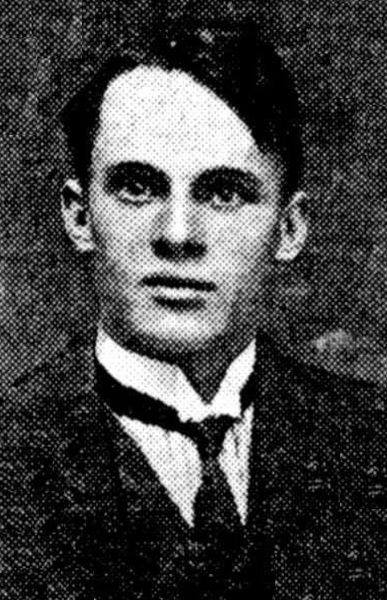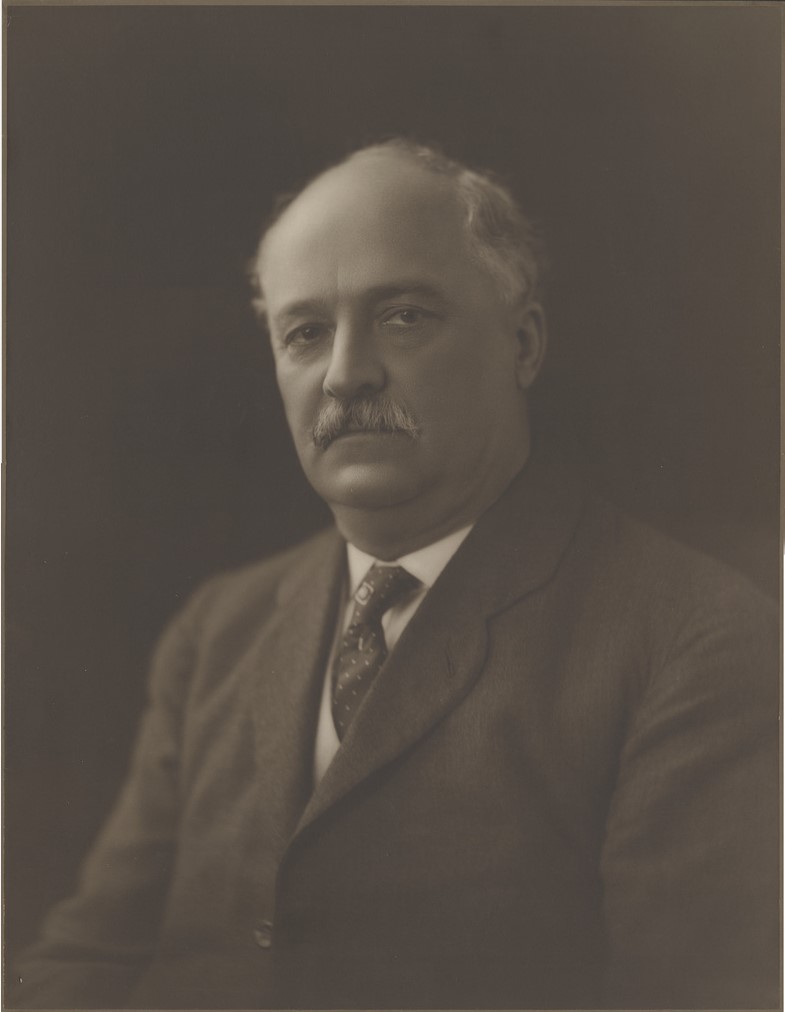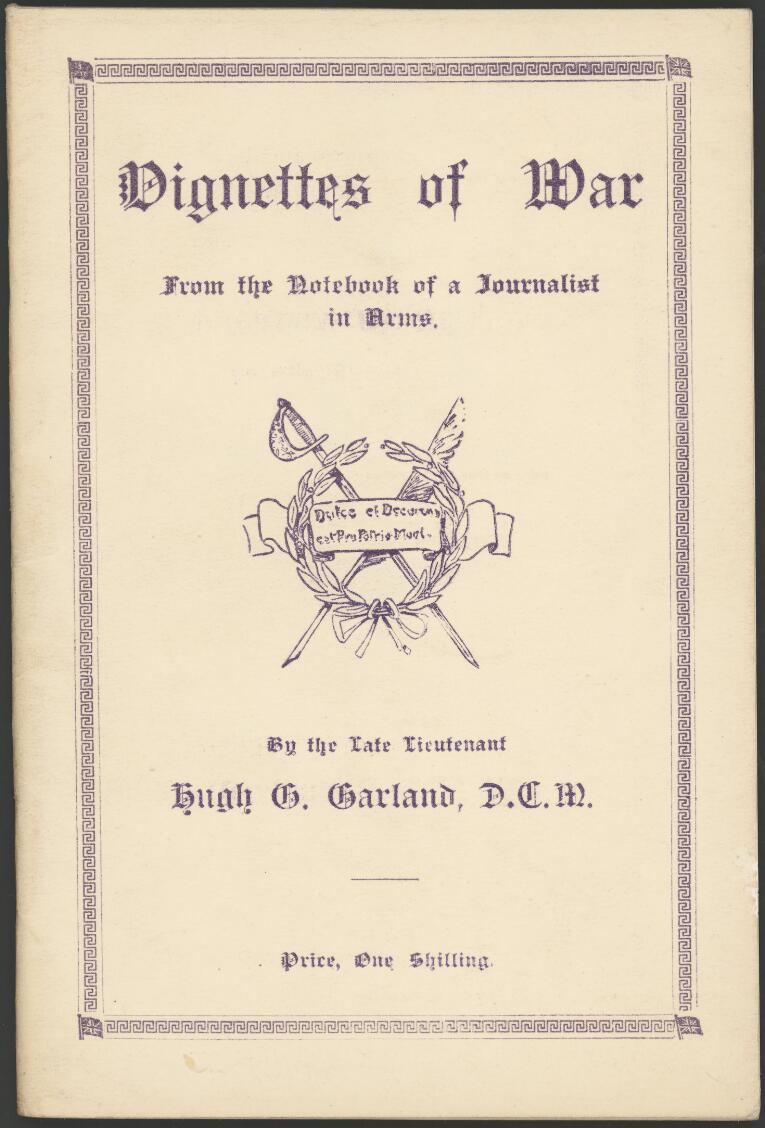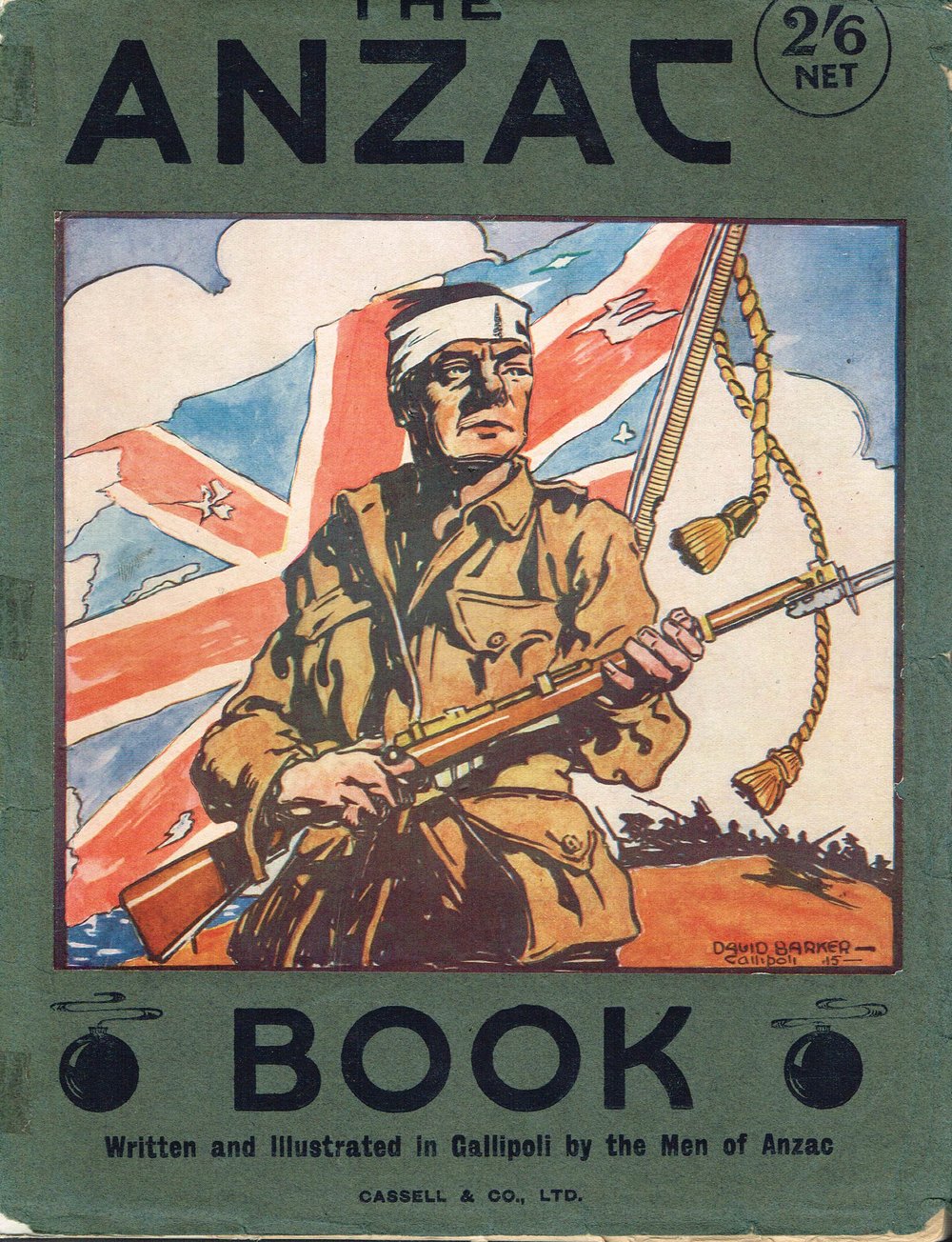A letter written by journalist and soldier Lieutenant Hugh Garland to Sir William John Sowden, editor of Adelaide’s The Register newspaper, and held in the Fryer Library, provides an early account of the Gallipoli Campaign. Fryer Librarian, Simon Farley, shares and reflects upon Garland's letter.
First Anzac Day commemorations
On 25 April 1916, the first Anzac Day commemorations were held. One year earlier, Australian and New Zealand forces had landed at Anzac Cove on the Gallipoli Peninsula where they met fierce resistance from the Ottoman Turks defending the place they called Çanakkale. Eight thousand Australian soldiers died in the campaign.
The first Anzac Day was marked by a wide variety of ceremonies and services across Australia. In London, more than two thousand Australian and New Zealand troops marched through the streets. Marches were held all over Australia. In the capital cities, cars carried soldiers wounded at Gallipoli and their nurses.
An early account of the Gallipoli Campaign
A letter held in the Hayes Collection in the Fryer Library provides an interesting early account of the Gallipoli Campaign. Written on 16 February 1916, after the evacuation, by journalist and soldier Lieut. Hugh Garland to Sir William John Sowden, editor of Adelaide’s The Register, the letter pays tribute to the actions of the Australians and New Zealanders and in particular the South Australians of the 16th Battalion. The letter provides an interesting insight into the displeasure and dismay of the soldiers following the reorganisation of the battalions at the conclusion of the campaign.
Dear Mr Sowden,
I was delighted to receive your note of Jan 3, and thank you sincerely for the remembrance. I count letters from the office as among the best pleasures the mail bag can bring; and to the wanderer, the mail means so much. A soldier out here meets many good fellows, but he lives a life so entirely different to the old civilian days that it takes a letter from across the seas, sometimes, to remind him that one day the he may doff the khaki and wander in the old prosaic walks. It is good to know that my letter from Lemnos Island proved of some interest. According to letters received here it was the means of showing many South Australians that the Sixteenth Battalion meant something on the Peninsula; and I was amazed at the interest and appreciation of the boys of that Regiment. But, really, Mr. Sowden I am afraid the South Australians do not realise how much the Fourth Brigade, with their friends the New Zealanders, accomplished at Anzac – the […] of […] to which, of course, they gave the name.
When writing before I had not seen the boots on Gallipoli; now I have, and I am more than ever convinced of the splendid work of the Anzacs. Quinn’s Post, Popes Hill, Sikhs Hill, the charges of May and August – in all of these, and more, the Sixteenth Battalion saw, not merely garrison duty, but really hard fighting. And then, of course there was the landing. It is, perhaps, fitting that these things should be remembered just now when good comrades are being separated in the reorganization of the Australian Army, and the Australian and New Zealand Divisions, whose name will shine on the records of history, is to be known as the Anzac Division no more. I suppose the home people were aware long before we knew that the Australians and New Zealanders were to be parted owing to the increase of the Commonwealth’s forces. This may mean but little to the purely Australian divisions, but to the Fourth Brigade, which has worked with the New Zealanders, it is a change of great personal moment. Perhaps it is impossible, but it seems a great pity that [page 3] [Page 3 is missing] [page 4] of the deadliest work in the Peninsula was performed by the Anzacs, a division composed of the Australians and New Zealanders, who drilled, and drunk, and fought and died together. Not only are divisions to be broken up, seemingly, but also battalions and companies. In the re-organisation it is possible that friends of long standing will be parted. Take the sixteenth battalion, as an instance. Half of the men will remain in the old regiment and half will go with the 48th. I cannot record all that the fellows say of this change – the language would be [unpalatable?]. In the army, however, one can say things, but not too loudly.
Of course, most of the boys now with the battalion are reinforcements, but all are proud of its reputation, which in truth has been made largely by them. Today the company to which I belong was lined up for the separation. Volunteers for the new (48th) battalion were called for and not a man came forward. So the men were chosen by ballot. In my tent, from 8 men, seven, including myself drew the 48th ticket. Other tents were more fortunate, but everywhere friends were separated. Perhaps it is all for the best, but, up to date the boys see only the worst. By now, I suppose, there is but little interest in the Peninsula campaign. The lads out here are more concerned about the future than the past, and and are constantly speculating concerning the whereabouts [sic] of their next sphere of activities.


State Library of South Australia
Collection
More than a century on, we know that Gallipoli would not be forgotten. Australians and New Zealanders would forge a new sense of national identity from the harsh experiences and sacrifices made on the Peninsula. Hugh Gordon Garland was later killed in action in France on 3 May 1918, aged 24 years. He is buried in the Adelaide Cemetery at Villers-Bretonneux. On 15 May, The Register reported:
The Late Lieut. H. G. Garland, D.C.M. Adelaide pressmen learned with deep sorrow on Tuesday afternoon of the death on the western front on May 3 of Lieut. H. G. Garland, D.C.M., whose sterling character, no less than his marked journalistic ability and promise of a brilliant literary career, had won for him the highest esteem of his old colleagues on The Register and its associated journals, and the reporting staffs of the other Adelaide newspapers. He was the fifth member of The Register literary staff to make the supreme sacrifice…
Other writings
Along with Hugh Garland’s letter to Sir William Sowden three copies of his book Vignettes of war from the notebook of a journalist in arms, published posthumously in Adelaide in 1918, are also held in the Fryer Library. One is inscribed to Sir William.
Garland’s poems, including “My Lady Nicotine” appeared in The ANZAC Book (1916) edited by C.E.W. Bean.

